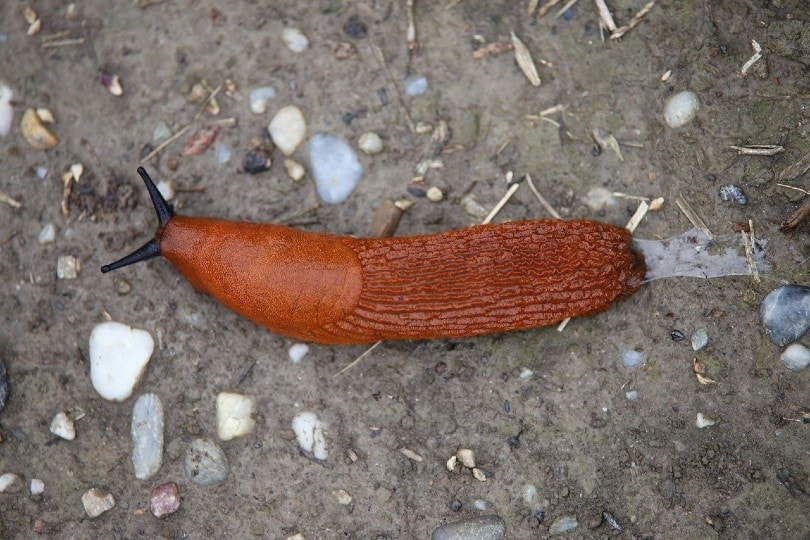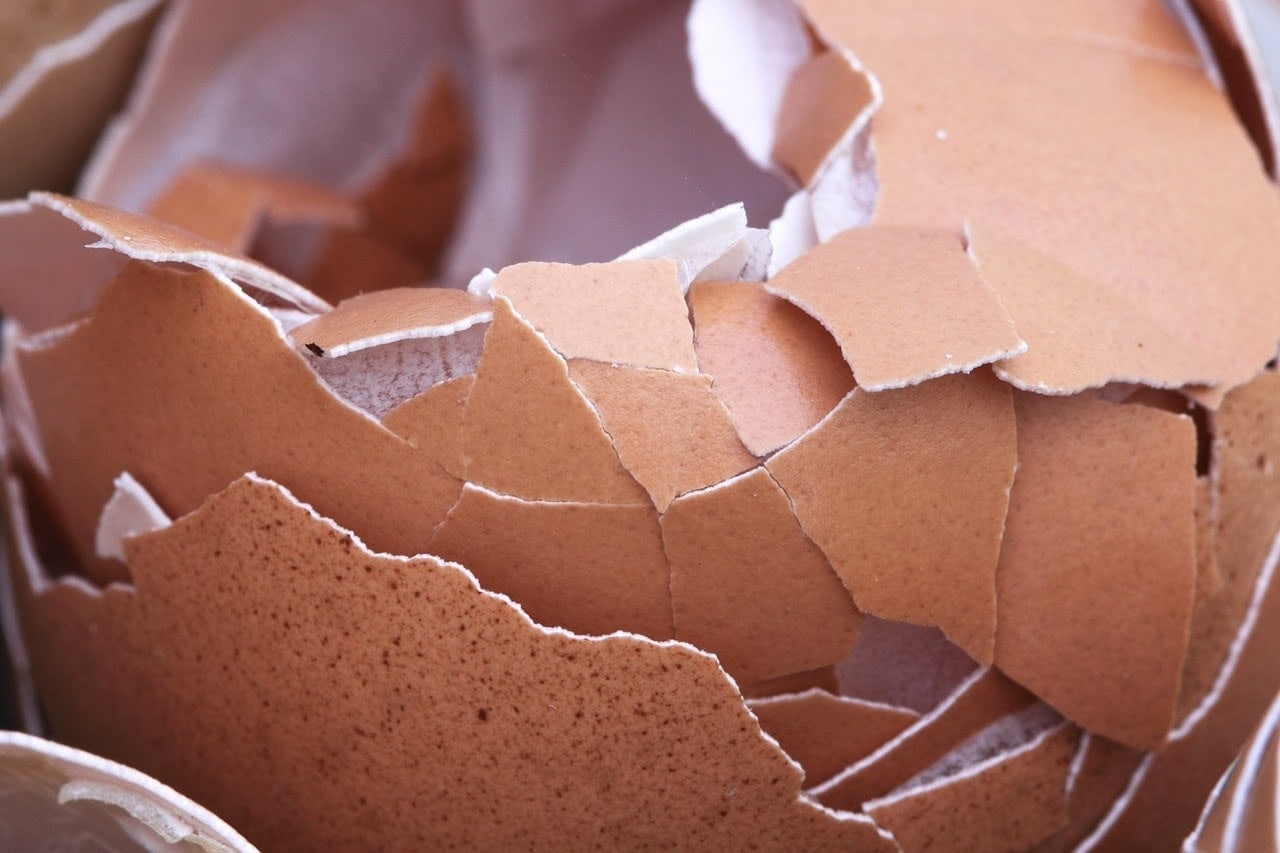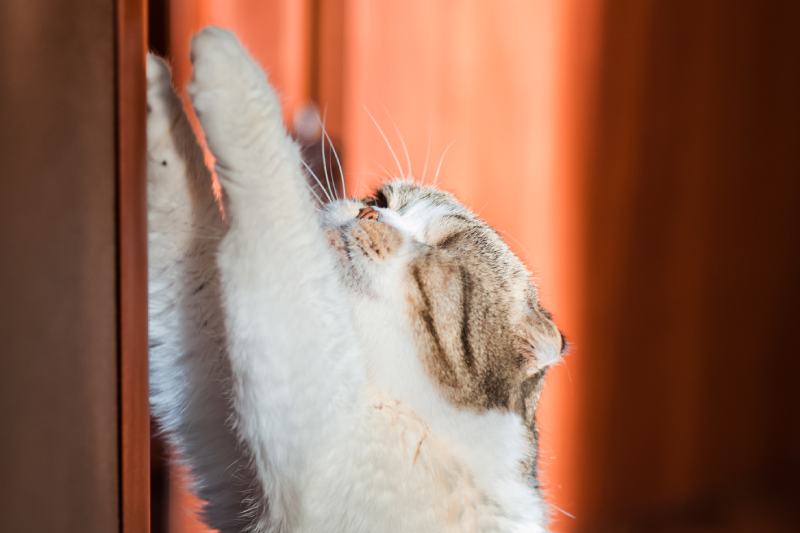How to Keep Slugs Away From Cat Food: 8 Vet-Approved Methods
Updated on

Click to Skip Ahead
If you’ve got cat food sitting out, there’s no shortage of animals that would love to take a bite. One of the more surprising things you might find hanging around your cat’s food cowl is slugs. Although your common garden slug isn’t poisonous to cats, thankfully, they can be harmful in other ways, so it’s best to keep them out of our cat’s food bowl. To help, we’re giving you 10 different methods to keep your cat’s food slug-free.

Slugs vs. Snails: Does the Difference Matter?
So, are we actually dealing with slugs, or are we dealing with snails? The truth is that it really doesn’t matter. Although very similar, their physical difference is obvious: snails have shells and slugs don’t. If you don’t see a shell, odds are it’s a slug. Slugs are also longer than snails, reaching up to 15 inches long, while snails reach up to 10 inches.
Both snails and slugs can carry the larvae of certain parasites, most notably, Aelurostrongylus abstrusus, aka lungworm. If your cat ingests all, or part of, a slug infected with lungworm, they can develop severe, life-threatening respiratory signs, while others may show no signs at all.
To reduce your cats exposure to this possible threat, here are some tips to keep slugs away from your pet’s food.

The 8 Vet-Approved Methods to Keep Slugs Away From Cat Food
1. Bring the Cat Food Inside
A quick and easy way to keep slugs away from the cat food is to simply bring the food inside. Leaving cat food outside will only attract bugs, slugs, and other critters, so don’t leave it out if you can help it. Feed your cat inside and let them out after they’re done eating.
2. Sprinkle an Unpleasant Substance Around the Bowl
If you need to keep your cat’s food outside, try sprinkling something around the bowl that slugs hate, such as:
- Eggshells
- Diatomaceous earth
- Sand
The coarseness of these substances will irritate a slug’s underbelly, and likely it won’t want to come back for seconds.

3. Use a Scratchy Welcome Mat
Welcome mats with scratchy fiber like coir (coconut fibers) will immediately deter slugs from cat food because of the harsh material. You might even have one on your front doorstep that you can use now! Or you can buy a new one and let your cat scratch it up.
4. Elevate the Cat Food
Slugs and snails don’t exactly take the high road, so take advantage of this and elevate the food bowl off of the ground.
5. Place the Cat Food in a Closed Container
Animals and insects will go where the food is, so it’s wise to keep the cat food in a sealed-tight container. Not only will this prevent other critters from snacking, but it will also keep your cat’s food fresh longer.
6. Use an Automatic Feeder
Automatic feeders will keep your cat’s food enclosed until a specific programmed time. You can try feeding your cat more often in smaller portions, using an automatic feeder to keep slugs away.

7. Create a Moat
Get creative by placing the food bowl inside a larger bowl. Fill the larger bowl with water, creating a water barrier around the food bowl. Slugs won’t try to cross the moat provided it’s large enough that they can’t reach across it.
8. Add a Lid
Sometimes, the solution is as simple as adding a lid. The lid doesn’t necessarily need to be sealed either. You can place something on top of the food bowl and teach your cat to remove it whenever they’re hungry. However, you will have to put it back every time they’re done eating, which can get annoying.
Are Slugs Harmful to Cats?
Most slug species found in the United States are not poisonous to cats, but there are other factors to consider. We know about them carrying lungworm, but what else?
Slug Pellets
A cat could ingest a slug recently poisoned by a slug pellet. The ingredients in slug pellets dehydrate snails by inhibiting slime production, with the main ingredient being metaldehyde. Although effective, these ingredients are equally harmful to cats.
Metaldehyde poisoning will usher in tremors, seizures, and elevated body temperatures that occur when a pet consumes this dangerous chemical. The downside is that there’s no way to tell if a slug has been poisoned, as slug pellets take a few days to kick in.
This is also why you shouldn’t use slug pellets anywhere your cat or dog can reach them.
Pesticides
Gardeners do not want slugs in their gardens, so pesticides are a common solution. The problem is that pesticides never truly go away. They’re transferred from one creature to another. If you have a slug problem, be careful about using pesticides, especially around other animals.

Is Slug Slime Toxic to Cats?
The slime itself isn’t toxic to cats, but theoretically, it may carry the same parasites, chemicals, and anything else the slug has been in contact with, so just be mindful of this.

Conclusion
Do we want to deal with slugs? No, but they will appear at some point. Now, you’re ready to deal with the problem so you can keep them away from your kitty’s food. Give these methods a try and see if they help. We’re sure one of them will be a winner.
Featured Image Credit: sophiecat, Shutterstock













